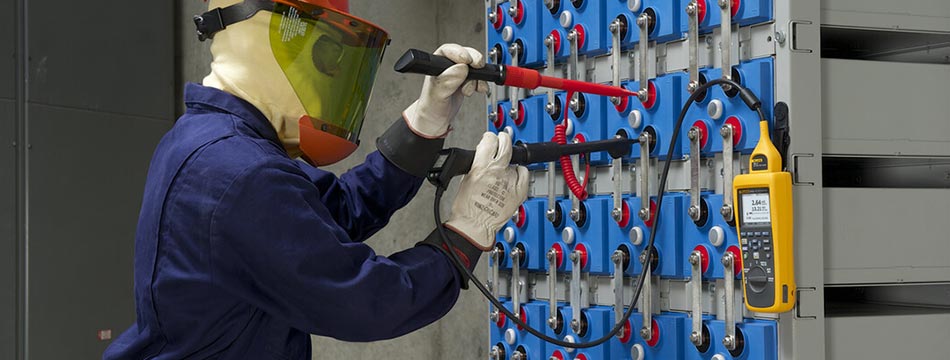
Battery backup and generator systems are used everywhere from hospitals and IT datacentres to small UPS systems for backing up office PCs. Batteries need regular maintenance and checking to ensure that they are working correctly, that they still provide their rated outputs and that they are not deteriorating.
Battery testing is crucial to ensure an electrical system provides sufficient standby power for emergency lighting, UPS systems and continuous process plants. With a price range from just under £500 to almost £5,000, battery testers are commonly used to test features such as cell voltage and impedance, as well as float and ripple currents.
Tests for batteries include load testing, DC measurement, impedance and conductance testing, shake-and-bake testing, abuse testing and more. There are also dummy loads available to check the performance of a battery under load conditions.
Battery testers can measure lead-acid cells up to 2000Ah and perform diagnostic on batteries to boost telecom networks during power outages. UPS batteries are usually designed for high discharge rate lasting typically only 15-20 minutes, whereas a telecommunications battery may have only a 500A draw but can discharge for up to eight hours.
In UPS systems, battery failure commonly manifests itself with sediment buildup due to excessive cycling. Other failures occur naturally such as positive grid corrosion and excessive cycling, temperature and over-charging increases the speed of this process.
Increasing impedance
Impedance increases over time in proportion to the increase in electrical resistance. Sediment build-up or shedding is a function of the amount of cycling a battery endures. This is more often seen in UPS batteries but can be seen elsewhere, where the plate material converts to a white lead sulphate deposit.
The reason batteries have space at the bottom is to allow for a certain amount of sediment before it builds up to the point of shorting across the bottom of the plates. Some battery designs have wrapped plates where sediment does not drop to the bottom. The most common application of wrapped plates is UPS batteries.
The Megger BITE3 Battery Impedance Tester will test lead-acid cell batteries up to 2000Ah and measure cell impedance, voltage, inter-cell connection resistance and ripple current, as well float current and harmonic content of ripple current.
A spectrum analyser is also included to evaluate harmonic content on a frequency scale. Reports include an impedance deviation graph which groups weaker cells together automatically.
Following close on the heels of the Megger is a rival in the form of the Hioki BT4560 Battery Impedance Tester, which claims to cut traditional testing times for Li-Ion batteries down to ten seconds by using a frequency less than 1Hz to measure internal impedance, eliminating the need to pre-charge the battery and use a large current to check voltage drops. The tester also checks both internal impedance and voltage simultaneously with accuracy of ±0.0035%.
As standard the BT4560 comes bundled together with Hioki's software that allows Cole-Cole plots to be created and adjusted as needed. A panel save/load function can then be used to save up to 126 sets of measurement frequencies for use in any application.
Handheld battery testers
Turning to handheld testers, the Fluke BT521 Advanced Battery Analyser is designed with portability in mind and includes integrated user-help systems to guide on configuration of tests and audio/visual feedback cues when using the tester's comparison function.
The BT521 comes supplied as standard with Fluke's intelligent test probe. This uniquely designed, long-reach probe includes its own LCD screen for easy viewing of measurement results, can test battery temperature using infrared non-contact technology and also performs voltage, resistance and temperature testing automatically.
The Extech BT100 Battery Capacity Tester has the ability to test multiple battery types without shutting down the battery itself, including lead storage cell, nickel-cadmium batteries, lithium-ion and nickel metal hydride batteries, while an AC four-terminal method eliminates contact and lead resistances.
The Extech BT100 Battery Capacity Tester has a 1kHz test current and dual display that instantaneously specifies the voltage of the battery, as well as quick and accurate resistance measurements for results in battery deterioration characterisation.
In conclusion, battery testing will maximise the lifetime and RoI of UPS batteries, monitor and protect the integrity of standby power protection, identify and replace by necessity to make savings and save against callout charges should an unexpected failure occur.
For further information, please visit PASS Ltd’s specialist UPS & Battery Testing web page.


